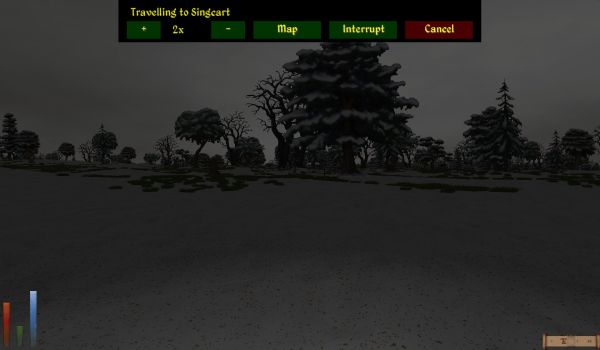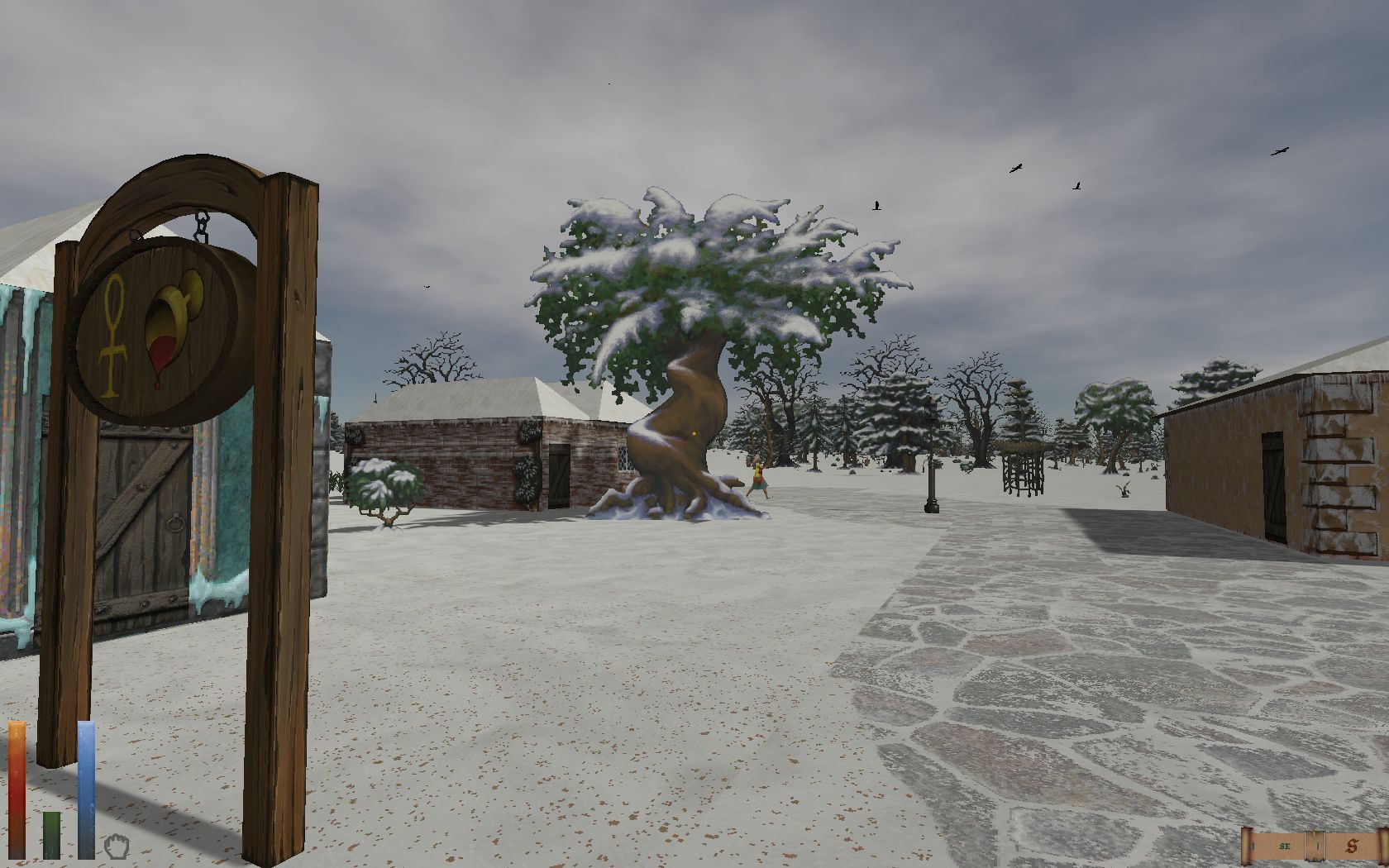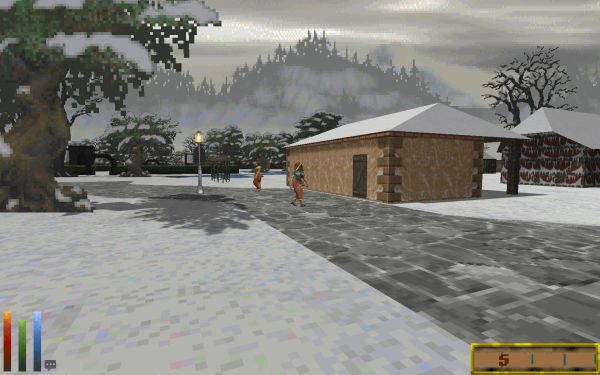
Roads would have helped, but who’s supposed to pay for them? I’ve been in Daggerfall for years and never paid a dime in taxes.
In classic Daggerfall, there are two ways to travel between locations on the province map: Fast travel, or traveling on your own.
You can literally walk or ride from one town or dungeon (or village or graveyard or farmstead) to another, simply look at the map to find the direction and use your compass to go in that direction. Eventually you will arrive, or else miss it and walk right past, since Daggerfall (unlike the other Elder Scrolls games) does not have roads outside of the habitation. (This is probably not realistic to make with a mod, given that Tamriel is the size of Great Britain or above, but that would have been ideal.)
Fast travel on the other hand is virtually instant for the player, but not for the character: You click on the destination and get an estimate of how long it will take given a couple different options. Then you confirm, and the new location loads. Time and date will have updated accordingly, but you the player don’t feel like it has taken time. The time is only relevant if you are on a deadline. Most quests have very generous deadlines, but if you take on several at the same time you may need to factor in the time.
What if you could experience distance in the game without having to hold down the forward button the whole time? There is a mod for that.
“Tedious Travel”
Thanks to a mod developer known as jedidia, you can replace the fast travel option with what he (?) calls ‘a convenient “autopilot” and adjustable time compression.’ The autopilot is extremely simple, it just points the nose against the target and off you go. If you start it in towns, you may get stuck in buildings; but overland it is quite effective. Unlike fast travel, but like traveling on your own, you may run into hostile encounters, but the mod thoughtfully pauses the game when this happens so you can take control of the situation: Kill or be killed, or try to run away, or – if you are a linguist – convince the rampaging orcs that you are on their side and they are obliged to guard you against wild animals while you take a nap.
But before we get ahead of ourselves, why would one want to do tedious things in a game? Well, not all have a super vivid imagination. When you are used to just clicking on a map, it can be hard to get a feel for how an actual character in a medium-tech, medium-magic world would feel about distance. For instance, I’ve found myself not bothering to look for bargain shops in an unfamiliar town, instead fast traveling to a town where I know I can get good prices for my loot. That would be a lot less likely to happen if I actually had to ride for several days to get there!
Luckily you don’t have to spend several days in the wilderness even with Tedious Travel. This is where the “adjustable time compression” comes in handy. By default you move 10 times faster than normal walking / riding speed (your choice of transportation matters for travel time, obviously). You see the terrain fly by like on a train. You can slow this down if you want to enjoy the scenery, or speed it up. I got to 45 before I gave up. At some point I guess it won’t be tedious anymore, although I assume the risk of wilderness encounters remains even at high speed. (Time compression is turned off for the duration of the encounters, so don’t worry about that. Also as mentioned, the game stops and wait for you to take the reins.)
Even if you go for higher speeds like 40x or even 50x, you should still get a good idea of the difference between local and regional travel. Visiting the next village over may be a short trip, but traveling from the west coast to the north-eastern mountains or the south-eastern jungle will still be an adventure. There are two reasons for this. The first is the random encounters, as mentioned – on a long journey there will be lots of them. Related to this, there is the matter of stamina.
Stamina is not a problem during the original fast travel. In fact, if you choose cautious travel, you will arrive at daytime with full health and stamina, no matter your starting condition. But with Tedious Travel, as with manual travel, you will eventually get tired. Traveling by cart or horse is less tiring than walking, but after a day in the saddle you will no longer be able to go on. Letting your stamina get too low is also a problem if you run into bandits or monsters: Fighting them takes stamina, and if you run out of energy during the fight, they are not going to show you any mercy. Also, the chance of unfriendly visits increase if you camp out at night rather than the day.
Luckily, rural Daggerfall has a decent number of hostel villages, typically named after a long gone tavern but now occupied by one to three inns and a few other buildings (presumably where the staff lives). They always have plenty of room these days, although if you explore them you will occasionally find NPCs in various states of undress in some rooms. If you’re not looking for more combat experience, for instance because you are a linguist traveling on some scholarly quest, you may prefer to set your course for the nearest such village in the general direction you are going, and get a good night’s sleep there before moving on. They are generally very affordable. Once you start approaching travel in Daggerfall more realistically, it becomes obvious why there are so many of them – in fact, the question is why there aren’t more.
***
Yes, I am easily amused, I guess. In the highly unlikely case you want to try out this or any of the innumerable recent mods for Daggerfall Unity, you should go to the Daggerfall Workshop Forums – Released Mods.


